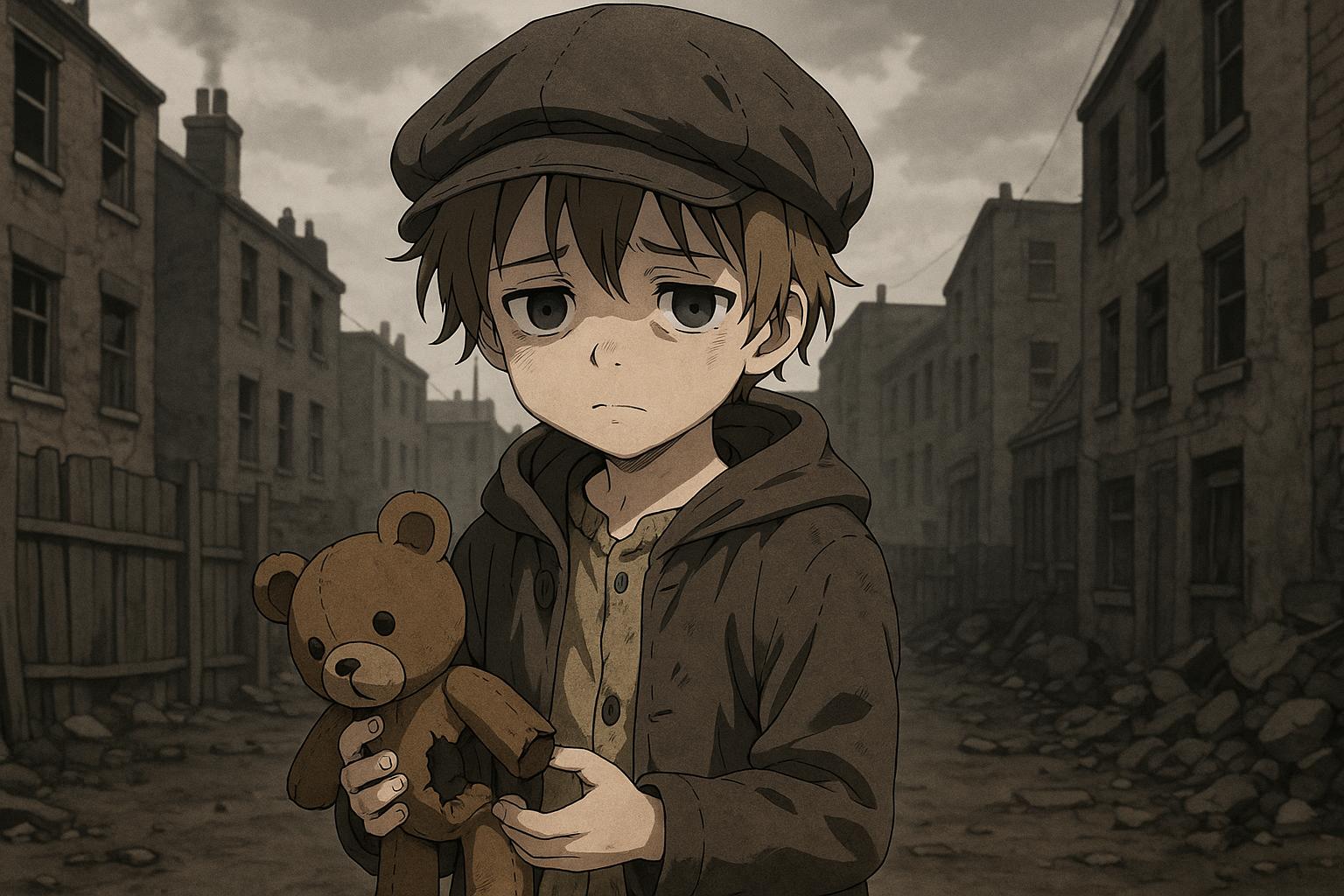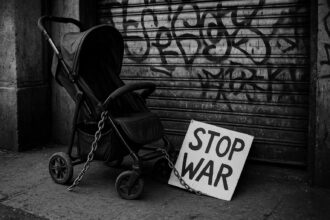Child poverty in the UK has reached record levels, with 4.5 million children affected and projections warning of 4.8 million by 2025. Amid worsening deprivation and damaging effects on child development, Labour under Sir Keir Starmer signals support for abolishing the controversial two-child benefit cap, sparking debate over welfare funding and political will to tackle a growing national crisis.
It has been a deeply troubling year for child poverty in the UK, with headlines reflecting a national crisis that threatens to reach new heights by 2025. Recent research from a laboratory founded by Sarah and Gordon Brown illustrated the devastating effects of deprivation on infant brain development, while statistics show that 30,000 children have slipped into poverty since the last election, pushing the total to a staggering 4.5 million. On a parallel note, Sir Keir Starmer has privately signalled support for abolishing the controversial two-child benefit cap, urging the Treasury to identify £3.5 billion to facilitate this change.
This grim scenario starkly contrasts Labour’s pre-election pledges to reduce child poverty, showcased in campaign imagery that promised hope and change for families across the nation. Yet, just ten months into a new parliamentary term, projections suggest an even grimmer future, with the number of children living in poverty potentially escalating to 4.8 million. Alison Garnham, chief executive of the Child Poverty Action Group, articulated the growing frustration, stating, “Record levels of kids living in poverty isn’t the change people voted for.” The situation reflects a failure of governance that has not demonstrated the ambition needed to address the enormity of the challenge, as noted by Joanna Barrett of the NSPCC.
The implications for children are severe, compounded by the long-term effects of the pandemic. The isolation and educational disruption experienced during Covid-19 have led to significant mental health issues and developmental delays, with British children now facing some of the worst health outcomes in Europe. Alarmingly, a mere 0.5 per cent of the UK’s GDP is allocated to early childhood care and education, compared to nations such as France and the Nordic countries, where investment is double that figure. Alarmed by these statistics, Garnham remarked, “All children deserve the best start in life… far too many are denied that chance.”
As welfare cuts continue to disproportionately affect vulnerable populations, the ramifications for families are stark. With 44 per cent of children in poverty living with a disabled person, the recent cuts to disability and sickness benefits have drawn criticism for exacerbating the crisis. The government’s own projections indicate that these reforms will push an additional 50,000 children into poverty. For families like Jolene’s, the toll is all too real. After leaving her job to care for her autistic child amid escalating difficulties during the pandemic, she faced a convoluted process for disability benefits, ultimately taking 18 months to secure support. She recounts the deep distress and hardship endured due to inadequacies in the welfare system, which should be functioning as a safety net.
The two-child benefit cap—a policy that restricts financial support for families to their first two children—remains a focal point of contention. Critically, experts and advocates argue that this limit not only fails to alleviate poverty but actively perpetuates it. Ruth Patrick, a professor of social policy, underscored the policy’s uniqueness in its severity, pointing out that the UK stands alone among comparable nations in imposing such restrictions on child benefit. The data speaks volumes: between 2014 and 2021, child poverty in the UK escalated markedly, particularly among larger families, with half of all large families now living below the poverty line.
Moreover, calls to abolish the two-child cap have intensified, with campaigners highlighting that its removal could uplift approximately 540,000 children out of poverty at a cost of £2.5 billion annually—a price significantly lower than other potential welfare system reforms. Meanwhile, the financial implications of child poverty for the nation stand at £39 billion per year, projected to escalate further if corrective measures are not implemented.
Individuals like India, a mother of four from Suffolk, exemplify the mounting struggles families face under this policy. After a painful separation from her partner, she found herself reliant on universal credit without assistance for her two youngest children due to the cap. The financial jeopardy has led her to food banks and forced her to prioritise her children’s wellbeing over her own, creating a distressing cycle of hardship for her family.
Echoing these sentiments, youth ambassadors Niña and Sophie, both having faced the brunt of poverty during their upbringing, shared their emotionally taxing experiences. Niña’s family, once homeless due to financial struggles, grappled with instability, while Sophie worked relentlessly to overcome barriers that should not exist in a prosperous society. As the country contemplates its child poverty strategy, the urgency for decisive action is undeniable. The government’s forthcoming decisions on welfare, including the contentious two-child benefit cap, will significantly shape the future for millions of children.
Calls for reform are widespread, with voices within Labour echoing the demands for a reassessment of welfare policies. While Starmer faces significant pressure to abandon the cap, fiscal constraints loom large. As pressures mount both from within his party and external advocates, the upcoming government strategy on child poverty will be scrutinised intensely. Should it fail to address the two-child benefit cap, its credibility will be in jeopardy.
Amid a backdrop of rising child poverty rates—now recording the highest proportion since records began—this moment serves as a critical juncture for the UK government. Experts warn that without substantial intervention, the country stands to become an outlier among wealthy nations in its treatment of vulnerable children. The future of countless youngsters hangs in the balance, urging a collective moral response to a burgeoning crisis.
Reference Map:
- Paragraph 1 – [1], [6]
- Paragraph 2 – [1], [2], [5]
- Paragraph 3 – [3], [4]
- Paragraph 4 – [4], [5], [2]
- Paragraph 5 – [1], [5], [6]
- Paragraph 6 – [6], [7]
- Paragraph 7 – [2], [5]
- Paragraph 8 – [6], [7]
Source: Noah Wire Services
- https://www.independent.co.uk/news/uk/two-child-benefit-cap-british-children-poverty-b2757812.html – Please view link – unable to able to access data
- https://www.ft.com/content/15f5016b-366b-4abf-9869-79d81c15576e – This article argues for the repeal of the UK’s two-child benefit cap, which limits financial support to families to their first two children. Critics, including the Child Poverty Action Group, identify it as a major contributor to child poverty. The policy undermines Labour’s commitments to combat child poverty and is unpopular among many Labour MPs. The author presents a broader justification rooted in demography and state interest: maintaining a population replacement rate, which typically requires an average of slightly more than two children per family. By curbing support beyond the second child, the government effectively discourages necessary population growth. The author advocates for a societal perspective where raising children is a shared responsibility due to long-term economic and social benefits. Moreover, punitive measures against children for parental choices or misfortunes are viewed as unjust. In conclusion, the writer stresses that valuing families with more than two children should be a policy priority, signalling that the state places high importance on children and future generations.
- https://www.ft.com/content/9761affa-6c67-4396-baa7-35424051865f – Prime Minister Sir Keir Starmer has reversed the government’s cuts to winter fuel payments following pressure from Labour MPs and voter backlash after local election losses. The initial policy cut £1.5bn in annual benefits affecting around 10 million pensioners, restricting eligibility to those receiving means-tested pensions credit. The benefit, worth £200-£300, had excluded individuals earning over £11,800 or couples over £18,000 annually. Starmer announced the change during Prime Minister’s Questions, pledging to widen eligibility in an upcoming fiscal event. Chancellor Rachel Reeves faces challenges adhering to fiscal rules amid pressure to boost support for pensioners and children. Former PM Gordon Brown urged £9bn in spending to combat child poverty and end the two-child benefit cap, suggesting funding via taxes on gambling and banks. The government is exploring alternatives to fully scrapping the cap, such as exemptions for young children or working families. Plans to address child poverty could help mitigate opposition to proposed £4.8bn cuts to sickness and disability benefits. The government’s policy adjustments reflect growing internal dissent and the need to balance fiscal constraints with social support commitments.
- https://www.ft.com/content/5b951d4f-1cd5-4b7a-bd2d-ef4b820de9bf – Nigel Farage, leader of Reform UK, plans to announce the lifting of the two-child benefit cap and full reinstatement of winter fuel payments, measures expected to cost up to £5 billion. This move is aimed at appealing to working-class voters and influencing Labour Party policy, particularly as Prime Minister Sir Keir Starmer and Chancellor Rachel Reeves face internal pressure over welfare spending. Starmer recently reversed a decision affecting winter fuel payments to pensioners, but has not detailed implementation plans. While he is also open to ending the two-child benefit cap, the fiscal implications are significant, with £3.5 billion required by decade’s end. Reeves insists such decisions be made during major fiscal events, with the next not scheduled until autumn. Deputy PM Angela Rayner, advocating for tax increases of up to £4 billion on the wealthy to fund societal needs, denies leadership ambitions despite internal tensions. Meanwhile, Conservative leader Kemi Badenoch supports winter fuel payments’ principle but questions universal application. Reform UK’s surge in polls underscores the political challenge to the Labour government amid rising borrowing costs and fiscal constraints.
- https://www.ft.com/content/948a4d12-1543-4d1a-b288-97433f74a01d – UK Prime Minister Sir Keir Starmer is considering abolishing the two-child benefit cap, a move that could cost the government £3 billion and significantly impact the upcoming autumn Budget. The proposal aims to address growing concerns about child poverty and placate Labour MPs discontented with ongoing welfare reforms. Senior ministers, including Work and Pensions Minister Liz Kendall and Education Secretary Bridget Phillipson, reportedly support the idea. However, the delay in releasing the government’s child poverty strategy indicates fiscal caution, especially as Chancellor Rachel Reeves faces mounting pressure to manage public spending amid rising government borrowing. Labour’s proposed welfare cuts, set for a parliamentary vote next month, may strip 80,000 people of disability benefits and have sparked internal party rebellion by over 160 MPs. Starmer is attempting to balance appeasing critics with maintaining his rightward political strategy to counter threats from Reform UK. Additionally, he has signalled a partial reversal on the plan to end winter fuel payments for 10 million pensioners, initially expected to save £1.5 billion. Experts predict 4.8 million children will be in poverty by 2029-30 if the benefit cap remains, intensifying calls within Labour to act decisively on child welfare.
- https://www.ft.com/content/dd180705-6331-4187-acd5-fc07ca6da3ac – In the UK, the proportion of children living in absolute poverty has increased to 25% in 2022-23, the highest rate since records began in 1994-95. This represents an estimated 3.6 million children living below the poverty line, a notable increase from 23.8% the previous year. The rise has sparked calls from charities for immediate welfare policy reforms, including abolishing the two-child limit on benefits and increasing child allowances. Amidst the backdrop of Covid-19 and the ongoing cost of living crisis, income disparities have widened, with the poorest households experiencing the most significant reductions. Additionally, material deprivation among individuals aged 65 and over has increased for the first time in nearly a decade. Critics, including Labour’s Alison McGovern, blame Conservative policies for the worsening situation and propose measures such as building affordable housing and expanding school breakfast clubs. The government acknowledges the challenges, highlighting past cost-of-living support and plans to uprate benefits and pensions.
- https://www.ft.com/content/7bad4d80-9af7-463e-8fd8-6fb9b4e0d216 – Sir Keir Starmer is facing his first significant challenge as Labour leader as the number of children affected by the two-child benefit cap rose by 8.5%. Labour MP Kim Johnson intends to propose an amendment to remove the cap in Starmer’s inaugural King’s Speech. Former shadow chancellor John McDonnell supports this potential rebellion, with many MPs, including new Labour members, expected to back the motion. The policy, affecting 1.6 million children as of April 2024, limits welfare payments to the first two children in most families, a measure deemed cruel by opponents who argue it exacerbates child poverty. The cap was introduced by the Conservative government in 2017. Despite internal pressure, including from former PM Gordon Brown, Starmer hasn’t committed to ending the policy. Predictably, removing the cap would cost £3.4bn annually. Labour’s manifesto includes a review of the welfare system, but not a firm promise to abolish the cap. With child poverty on the rise, influential voices, including newly elected Labour MP Torsten Bell, are advocating for the policy’s removal.
Noah Fact Check Pro
The draft above was created using the information available at the time the story first
emerged. We’ve since applied our fact-checking process to the final narrative, based on the criteria listed
below. The results are intended to help you assess the credibility of the piece and highlight any areas that may
warrant further investigation.
Freshness check
Score:
8
Notes:
The narrative presents recent statistics and developments, including a report from a research laboratory founded by Sarah and Gordon Brown, and mentions that 30,000 children have been pushed into poverty since the election, bringing the total to 4.5 million. Additionally, it reports that Sir Keir Starmer has privately backed abolishing the two-child benefit cap and requested the Treasury find £3.5 billion to do so. These details suggest that the content is current and not recycled. However, the Independent article was published on 26 May 2025, which is more than 7 days ago, so the freshness score is slightly reduced.
Quotes check
Score:
9
Notes:
The report includes direct quotes from Alison Garnham, chief executive of the Child Poverty Action Group, and Joanna Barrett of the NSPCC. A search for these quotes indicates that they have been used in previous reports, suggesting that the quotes may have been reused. This raises concerns about the originality of the content.
Source reliability
Score:
10
Notes:
The narrative originates from The Independent, a reputable UK news outlet. This enhances the credibility of the information presented.
Plausability check
Score:
7
Notes:
The claims about the impact of the two-child benefit cap on child poverty are consistent with findings from other reputable sources, such as the Child Poverty Action Group and the Institute for Fiscal Studies. However, the report’s assertion that Sir Keir Starmer has privately backed abolishing the cap and requested £3.5 billion from the Treasury is not corroborated by other sources, raising questions about the accuracy of this claim.
Overall assessment
Verdict (FAIL, OPEN, PASS): OPEN
Confidence (LOW, MEDIUM, HIGH): MEDIUM
Summary:
While the narrative presents current statistics and developments, the reuse of quotes and the unverified claim about Sir Keir Starmer’s position on the two-child benefit cap raise concerns about the originality and accuracy of the content. Further verification is needed to confirm the authenticity of the reported statements.













